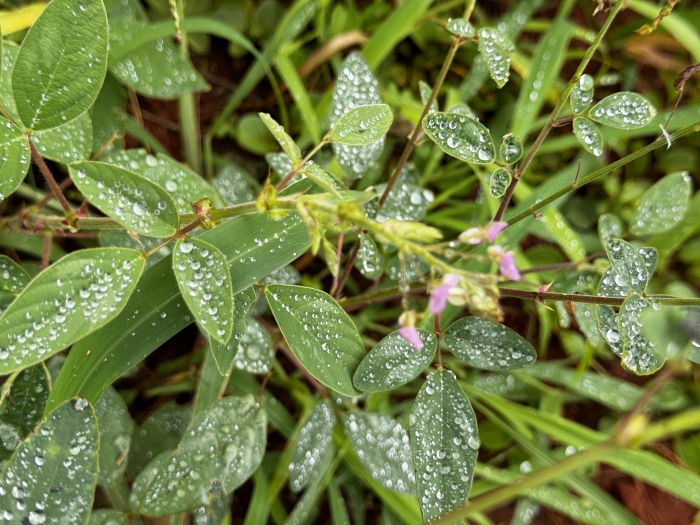Twisted Tick Trefoil
(Desmodium tortuosum)
Twisted Tick Trefoil (Desmodium tortuosum)
/
/

Jonathan Kade
CC BY 4.0
Image By:
Jonathan Kade
Recorded By:
Copyright:
CC BY 4.0
Copyright Notice:
Photo by: Jonathan Kade | License Type: CC BY 4.0 | License URL: http://creativecommons.org/licenses/by/4.0/ | Rights Holder: Jonathan Kade | Publisher: iNaturalist | Date Created: 2024-02-16T00:00:45Z |

























Estimated Native Range
Summary
Desmodium tortuosum, commonly known as twisted tick trefoil, is a perennial herb native to open woodlands and forest edges in Latin America. It has been introduced to tropical and subtropical regions globally, often for use as forage. This species typically thrives in disturbed habitats, including fields and roadsides, where it can become weedy. It is characterized by its trifoliate leaves and small, pink to purple flowers that bloom in the summer. The flowers are followed by jointed seed pods that twist as they dry, aiding in seed dispersal. The plant can reach up to 5 feet (1.5 meters) in height and is known for its ability to fix nitrogen in the soil.
Twisted tick trefoil is valued for its use in soil improvement and erosion control due to its extensive root system. It is also used as forage for livestock, although its palatability varies. In cultivation, it prefers full sun to partial shade and tolerates a range of soil types, provided they are well-drained. While it is drought-tolerant once established, it benefits from regular watering during prolonged dry periods. It is not commonly grown in ornamental gardens due to its invasive nature in some regions. Gardeners should be cautious as it can spread aggressively via seeds and rhizomes.CC BY-SA 4.0
Twisted tick trefoil is valued for its use in soil improvement and erosion control due to its extensive root system. It is also used as forage for livestock, although its palatability varies. In cultivation, it prefers full sun to partial shade and tolerates a range of soil types, provided they are well-drained. While it is drought-tolerant once established, it benefits from regular watering during prolonged dry periods. It is not commonly grown in ornamental gardens due to its invasive nature in some regions. Gardeners should be cautious as it can spread aggressively via seeds and rhizomes.CC BY-SA 4.0
Plant Description
- Plant Type: Shrub, Herb
- Height: 2-7 feet
- Width: 2-4 feet
- Growth Rate: Moderate, Rapid
- Flower Color: Blue, Pink, Purple, White
- Flowering Season: Spring, Summer, Fall
- Leaf Retention: Evergreen
Growth Requirements
- Sun: Full Sun, Part Shade
- Water: Low
- Drainage: Fast, Medium, Slow
Common Uses
Erosion Control, Low Maintenance
Natural Habitat
Open woodlands and forest edges in Latin America
Other Names
Common Names: Florida beggarweed, Showy Tick Trefoil, Amor-Seco, Beggarweed, Carrapicho-Beiço-De-Boi, Esmódio, Pega-Pega
Scientific Names: , Desmodium tortuosum, Desmodium ospriostreblum, Desmodium ospriostreblum, Desmodium physocarpos, Desmodium pulcherrimum, Desmodium pulcherrimum, Desmodium purpureum, Desmodium spirale, Desmodium stipulaceum
GBIF Accepted Name: